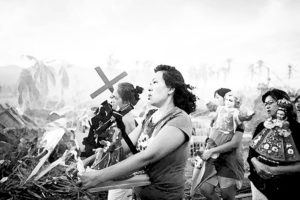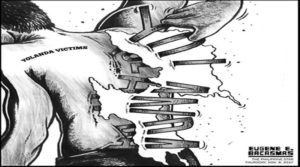Op-Ed: Lessons from Yolanda | Editorial – The Philippine Star
The ship that smashed onto the shore was not removed, and now serves as a memorial of sorts for the thousands who died or remain missing after Super Typhoon Yolanda pummeled Eastern Visayas. Residents believe some of the missing fatalities lie underneath the ship, which was pushed to shore by the powerful storm surge unleashed by the killer typhoon.
Yolanda formed in the Pacific in the first week of November 2013, making landfall in Eastern Visayas on Nov. 8. It roared across the region, leaving over 6,000 dead, knocking out power, flattening cities and towns and leveling farms planted mostly to coconut and bananas – major sources of livelihood in the area.
An international outpouring of support made up for the dazed response of the government at the time, and there was talk about building back better. No false hopes were raised, however; the extent of the destruction indicated that reconstruction would take time.
That fact does not lessen the disappointment over the slow construction of a basic need of the displaced: decent shelters, particularly in hard-hit Tacloban City and Balangiga in Eastern Samar. Lawmakers reviewing the status of the reconstruction effort reported recently that of the 205,128 houses targeted for the relocation of typhoon victims, the government had completed only 33 percent, with only 11.4 percent of the units occupied by survivors.
Weather experts had warned that the country would increasingly experience typhoons with the force of Yolanda. In the task of rebuilding, the suffering from the super typhoon was supposed to prompt the government to design disaster-hit communities for resiliency. How much disaster resilience has actually been designed into reconstruction efforts and government policies in general?
The nation had an avalanche of outside help in rebuilding after Yolanda. Several of the donors have experience in developing disaster-resilient and sustainable communities. The typhoon unleashed one of the worst calamities in the nation’s history. It would be another tragedy if lessons from Yolanda are not learned.
ASEAN NEWSPAPER OPINIONS AND EDITORIALS
7.1. The Erap formula at work– The Daily Tribune

7.2. Long lines continue at MRT stations– The Manila Bulletin

7.3. A four-year-old nightmare – The Manila Standard

7.4. PUBLIC TRANSPORT CRISIS – The Manila Times

7.5. In the Month of the Child– The Philippine Daily Inquirer.

7.6. Lessons from Yolanda – The Philippine Star

NOTE : All photographs, news, editorials, opinions, information, data, others have been taken from the Internet ..aseanews.net | [email protected] |
For comments, Email to :
D’Equalizer | [email protected] | Contributor









